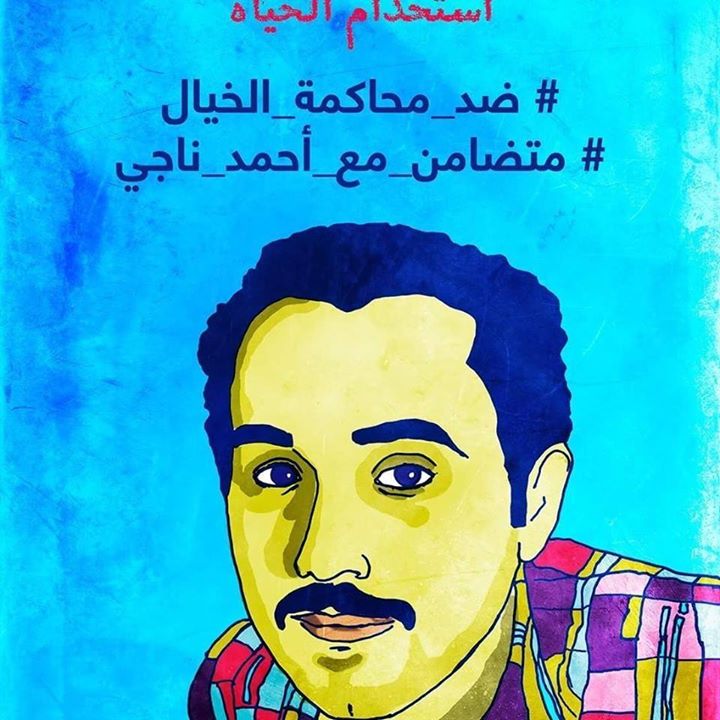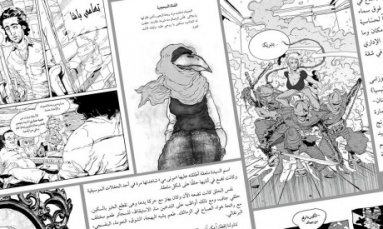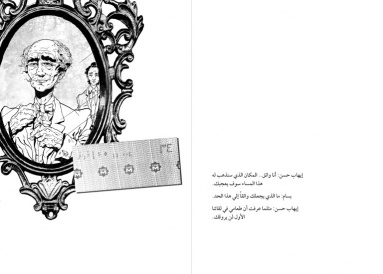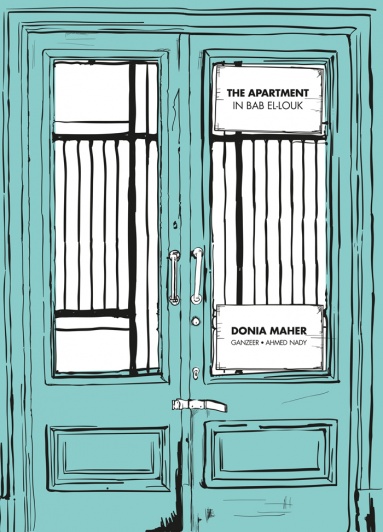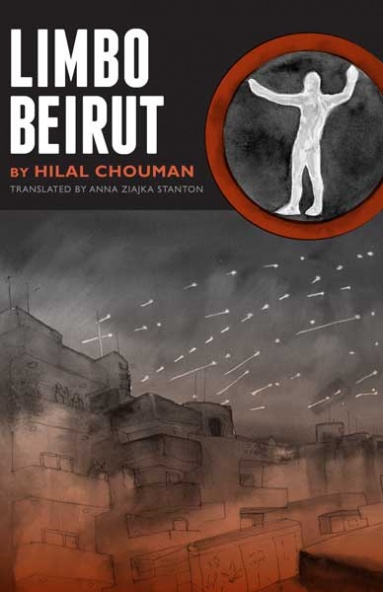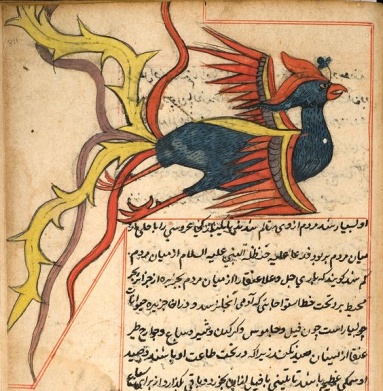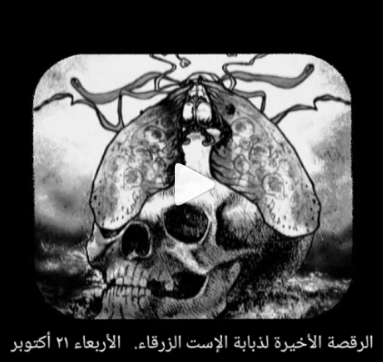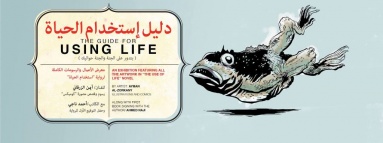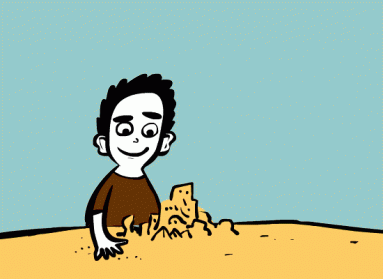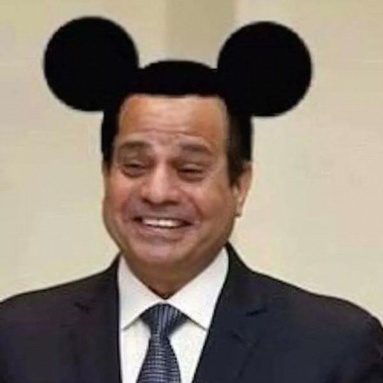Today marks a "Day of Blogging" for Egyptian novelist Ahmed Naji, who is serving two years in prison: guilty of having written the playful, language-rich, genre-crossing novel Using Life, he will be given the PEN/Barbey Freedom to Write Award, today, in absentia, in New York City. When Naji was charged with “violating public morals” for an excerpt of his novel published in a journal, he initially won his case, but lost an appeal and has been in jail since February 20.
Egyptian president Abdel Fattah el-Sisi seems to see playfulness as a growing challenge. Three years for a cartoon portraying the president in Mickey Mouse ears, the Fan al-Midan (Art is a Public Square) festival has been effectively shut down, the cartoonist Islam Gawish was jailed in February, and just last week, prosecutors extended the detention of the "Street Children" comedy troupe.
The criminal excerpt can be read online in English translation by Ben Koerber.
Below, Ben Koerber reflects on the play in using life.
...The mother that reads a story to her child: this is resistance. Building a small house: this is resistance. Singing at night is resistance. Having sex is resistance. Resistance is not just bearing arms; it is also the ability to adhere to the virtue of play, and to pursue–promiscuously, and with an eye to passion and pleasure–methods for using life...
I recall Bisu saying something to this effect some ten years ago.
July, 2006: Lebanon had been invaded again by the Israeli army after clashes with militants from Hizballah. A debate was raging in the Egyptian blogosphere on strategies for solidarity with the ordinary Lebanese citizens caught in the crossfire. “Resistance” was the rarefied term that Hizballah used to refer to the bullets and rockets it fired randomly southward. Bisu, blogging from somewhere in or around Cairo, had a different understanding of the word.
Like most people, I knew Bisu before I knew Ahmed Naje. The former was for a time the trickster-protagonist of the blog “Wassa' Khayalak” (“Widen your Imagination”), and was known for his devastating parodies of state-sponsored intellectuals, producers and consumers of kitsch, religious hypocrites, as well as other bloggers who took themselves too seriously. (The name “Bisu” is explained as a pseudo-diminutive form of Iblis or “Satan”; before knowing any better, I sometimes imagined him as sprightly little smug-faced sanfur – Arabic for “smurf” and an occasional topic of Bisu's posts). That was all back during the heady days of what Ahmed Naje, in his history of the Egyptian blogosphere, refers to as the “Diluvian Age”: a period of glorious cyber cacophony that lasted, roughly speaking, from the suppression of anti-Mubarak protests in 2005 to the draining of writers away from blogs to Facebook and Twitter a few years later. Sometime in late 2009, Bisu transformed, or molted, or something, into someone called “Ahmed Naje,” which also happened to be the name of a journalist, editor, and novelist in real life. There was no great “coming out” ritual here, only a courteous nod of admission to what many readers had already begun to suspect.
Fortunately, little else changed, and the blog stayed true to its slogan, “Live like you're playing.” Bisu's ludic imperative about the virtues of play were with me when I began to translate Ahmed Naje and Ayman Zorkany's novel, Using Life, in late 2015. Something I had read in graduate school by Roland Barthes about interpretation as “play” seemed to recommend itself in my efforts at self-justification, but I was happy that Bisu's sporadic use of the term was possessed of a more immediate vitality, and beckoned with the warmer and more inviting ontology of the nonce-concept. Barring some orange-haired apocalypse in November, my translation of Using Life is on schedule to be released by the University of Texas Press early next year. But though it may serve as the original work's primary representative in the English-speaking world, I would urge we consider it as just one “play” on the book written by Ahmed Naje and illustrated by Ayman Zorkany.
The English-language play on Using Life has been preceded by many others, in different idioms and media.
There are Ayman Zorkany's illustrations, which both complement and “translate” the text written by Ahmed Naje. Some of these may also be viewed on the Arabic book's Facebook page.
As a book, Using Life follows a number of recent experiments in graphic fiction in Egypt and the wider Arab World, such as Metro (El-Shafee, 2008; trans. Rossetti, 2012) and The Apartment in Bab el-Louk (Maher, Ganzeer, and Nady, 2014); as a literary-graphic hybrid, it resembles most closely Hilal Chouman's Limbo Beirut (beautifully translated by Anna Ziajka Stanton; available from the University of Texas Press in August).
Looking further back in the Arabic tradition, one may contemplate the uncanny resemblances between Zorkany's illustrations and the monstrous hybrids of Zakaria al-Qazwini's 13th-century Wonders of Creation manuscripts.
Curiously, while moral panics surrounding comics in the United States have historically targeted the genre for their graphic content, the illustrations in Using Life have not featured prominently in the recent legal controversy; perhaps this is because Zorkany's images, while seemingly grotesque, are only so to eyes not accustomed to the realities of urban decay in contemporary Cairo.
There is also "The Last Dance of the Blue Anus-Fly,” a film by Ayman Zorkany. Based on an illustrated section of Using Life, the animated film was recently screened at the Institut Français d'Egypte and other venues.
There is Using Life merchandise. The book's publication in Egypt coincided with an exhibit held at the Medrar artists' collective in downtown Cairo (Nov. 24 – Dec. 1, 2014), which featured Zorkany's drawings in a variety of printed formats, including T-shirts, hoodies, pins, coasters, and coffee mugs. These items were available for sale until recently at Cairo's Townhouse Gallery, which has been subject to raids, closures, and partial demolitions by various state agencies.
There are interpretive dance performances. The cultural center Darb 1718, in Cairo, hosted one in late 2015, which, though I attended, cannot now find a trace of on the interwebs.
There are critical reviews. An important context for playing with Using Life and understanding the surrounding controversy are several not-yet-translated articles by Egyptian artists and academics. Some appeared in a recent issue of the Cairo-based literary review 'Alam al-Kitab (“Book World,” no. 94/95, Nov.-Dec. 2015); for example, the intriguing essay by poet Ahmed Nada compares the trial of Using Life with that of Allen Ginsberg's “Howl,” a poem which has been translated into Arabic by Yusuf Rakha (in his recent novel, The Crocodiles, itself translated from the Arabic by Robin Moger), and before him by the inimitable Iraqi poet Sargon Boulus.
Lastly, or rather primarily, Using Life (Istikhdam al-Haya in Arabic) is itself a translation, in textual medium, of the aesthetic and architectural work that has conspired to design contemporary Cairo.
One of the great ironies of Naje's imprisonment is that such direct and draconian displays of state power are largely peripheral to the critical concerns expressed in his novel. Instead, Using Life directs the reader's gaze at the more subtle mechanisms of repression and constraint at work in contemporary Egypt: the perfidy of friends and lovers, the “kitschification” of culture, and, most importantly, conspiracies wrought in the realm of architecture and urban planning. The book is a play, in the first place, on the utterly unlivable state of today's Cairo – “a miserable, hideous, filthy, rotten, dark, oppressive, besieged, lifeless, enervating, polluted, overcrowded, impoverished, angry, smoke-filled, simmering, humid, trashy, shitty, choleric, anemic mess of a city,” according to the protagonist, Bassam Bahgat.
Let the reader be aware that among the city's current residents, Bassam's feeling is far from unusual. Cairo's decades-old crises in housing, electricity, waste management, and traffic (to name a few) have left the city both physically and psychologically scarred, and have remained unresolved amidst the waves of revolution and counterrevolution unleashed since January 25, 2011. The intervention of the security services into urban planning has disfigured the city even further: un-breachable metal sidewalk fences, forcibly depopulated public spaces, and huge, concrete block walls constructed in the middle of major streets are now familiar sights around the capital.
Yet as parts of Cairo have shut down, new aesthetic practices have emerged over the last decade to open new spaces for expression, as well as to re-purpose old ones. Graffiti artists have laid claim to the city's walls and barriers. Comedians and cartoonists have attracted cult followings through YouTube, and bloggers have emerged from the obscurity of their bedrooms to pioneer new literary genres. In fashion, advertising, and graphic design, independent artists have made spectacular interventions in fields traditionally dominated by foreign brands.
In Using Life, Zorkany and Naje have managed to synthesize many elements of this resurgent urban culture into something that, together with its “translations,” may serve as a guide-book of sorts for playing Cairo. All of these “plays” of/on Using Life – which, incidentally, were all performed or published before Ahmed Naje was sentenced to two years in prison – not only constitute forms of translation more inventive than the linguistic plays of professional interpreters, but that they also offer models for those contemplating solidarity in a manner suggested by the playful work itself.
